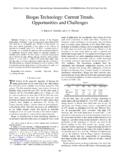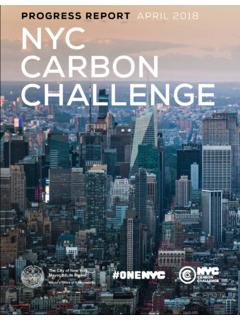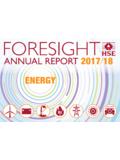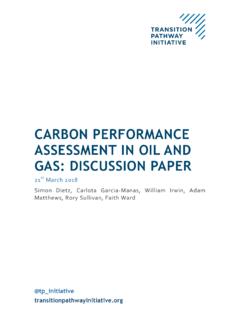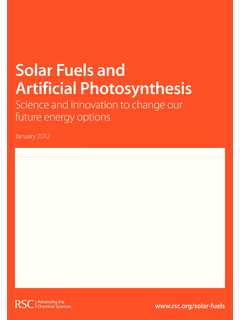Transcription of SOLAW TR0 - Food and Agriculture Organization
1 Soil carbon sequestrationSOLAW Background Thematic Report - TR04 BSOLAW TR04BR. LalTable of contentsIntroduction 5 The global carbon cycle 5 Basic concepts of carbon sequestration 7 challenges of enhancing soil carbon storage 9 Technical potential of soil carbon sequestration using recommended practices 14Co-benefits of terrestrial sequestration 15 Achieving global food security 16 Farming soil carbon 18 Need for new tools to measure SOM dynamics 19 Biofuels and soil carbon pool 20 Yield gaps and best management practices 22 Reasons BMPs are not adopted by resource-poor farmers 24 Enhancing farm income 25 Policy implications 25 Conclusions 26 References 27 List of figures1. Strategies of carbon sequestration based on natural processes, engineering techniques and chemical transformations2.
2 Interaction between the pedologic (soils) pool and the biotic pool as two distinct but related components of the terrestrial pool3. Recommended management practices to sequester carbon in soils4. Managing cycling of water, carbon , nitrogen, phosphorous and sulpher to enhance soil quality and accentuate ecosystem services5. Growing biomass and cyanobacteria as biofuel feedstocks from industrial CO2 and city wastewater6. Yield gap between BMPs and traditional technologies7. (a) World and (b) regional fertilizer consumption8. Co-benefits and ecosystem services created by SOC sequestrationList of tables1. Cost of carbon sequestration using different techniques2. Fossil-fuel-based input for modern Agriculture 3. Cumulative avoided emissions from land-use conversion 4.
3 Cost of carbon sequestration by different techniques 5. Area under no-till farming in different countries6. Changes in irrigated land area in countries of sub-Saharan Africa from 1960 to 2003 Abbreviations and acronymsACC Abrupt climate changeBMP Best management practiceBNF Biological nitrogen fixationC CarbonCa+2 Calcium ionCaCO3 Calcium carbonate CBM Coal bed methaneCEC Cation exchange capacityCH4 MethaneCO2 carbon dioxideCSS C capture and storageEOR Enhanced oil recoveryg GramGCC Global carbon cycleGHGs Greenhouse gasesGM Genetically modifiedha HectareINM Integrated nutrient managementkg KilogramLCA Life cycle analysism MetreMg MegagramMg+2 Magnesium ionMgCO3 Magnesium carbonate MMV Measurement, monitoring and verificationMRT Mean residence time N NitrogenN2O Nitrous OxideNPP Net primary productivityNT No-tillP PhosphorusPedon The smallest unit of soil containing all the soil horizons of a particular soil typePg PectagramPpm Parts per millionRMPs Recommended management practicesS SulpherSIC Soil inorganic carbon SOC Soil organic carbon SOM Soil organic matterYr YearZn ZincLand and water use options for climate change adaptation and mitigation in agriculture5 IntroductionThis report describes the technical potential of C sequestration in soils, discusses technological options that are available for realizing the potential, and outlines the challenges of turning world soils into sinks for atmospheric CO2.
4 The goal is to collate, review and synthesize important information on soil C sequestration to enhance the credibility and integrity of the scientific information (Sills, 2010).An increase in the atmospheric concentration of carbon dioxide (CO2) (from 280 parts per million (ppm) in the pre-industrial era to 390 ppm in 2010, an enrichment of 39 percent) and other greenhouse gases (GHGs, such as nitrous oxide [N2O] and methane [CH4)], may accentuate radiative forcing and alter the Earth s mean temperature and precipitation (IPCC, 2007). The atmospheric concentration of CO2 at 390 ppm as a volume is equivalent to ~590 ppm as a mass The mass of the atmosphere is x 1018 kg (Trenberth et al., 1988). There-fore, the total mass of CO2 is 3 030 Pectagrams+ (Pg), which is equivalent to 825 Pg of carbon .
5 Because of this strong impact on radiative forcing, there is increasing emphasis on identifying strategies that will reduce the rate of enrichment of atmospheric CO2 by offsetting anthropogenic emissions. The focus, therefore, is on sequestration of CO2 from the atmosphere or point sources. Anthropogenic sources include the combustion of fossil fuel, cement manufacturing, deforestation and the burning of biomass, and land-use conversion includ-ing drainage of peatlands, soil tillage, animal husbandry, etc. There is a strong interest in stabilizing the atmospheric abundance of CO2 and other GHGs to mitigate the risks of global warming. The Conference of the Parties (COP)-15 arrived at the Copenhagen Accord, which suggests reducing net emissions to hold the increase in global temperature below 2 C (UNFCCC, 2009).
6 Although disappointing, the Accord provides opportunities for limiting warming (Ramanathan and Xu, 2010). Its acceptance implies that CO2 concentration needs to be limited to below 441 ppm by 2100 by reducing CO2, CH4 and N2O emissions and by offsetting emissions through sequestration of carbon in soils and other terrestrial and inland aquatic strategies are available for lowering CO2 emissions to mitigate climate change (Schrag, 2007): (i) reducing global energy use; (ii) developing low or no-C fuel; and (iii) sequestering CO2 from point sources or atmosphere using natural and engineering techniques. Between 1750 and 2003, anthropogenic emissions were estimated at 292 Pg from the combustion of fossil fuels (Holdren, 2008), and at 136 30 Pg from land-use change, deforestation and soil cultivation (IPCC, 2001).
7 Currently, approximately Pg C yr-1 is emitted by fossil fuel combustion (IPCC, 2007; WMO, 2010) and Pg C yr-1 by deforestation, land-use change and soil cultivation. The total for anthropogenic emissions is Pg C yr-1, of which Pg C yr-1 is absorbed by the atmosphere and Pg C yr-1 by the ocean. The remainder may be absorbed by unidentified terrestrial sinks. The global carbon cycleThere are five global C pools, of which the largest oceanic pool is estimated at 38 000 Pg and is increasing at the rate of Pg C yr-1. The geological C pool, comprising fossil fuels, is estimated at 4 130 Pg, of which 85 percent is coal, percent is oil and percent is gas. Proven reserves of fossil fuel include 678 Pg of coal ( Pg yr-1 of production), 146 Pg of oil ( Pg yr-1 of production) and 98 Pg of natural gas ( pg yr-1 of production) (Schrag, 2007).
8 Currently, coal and oil each account for approximately 40 percent of global CO2 emissions (Schrag, 2007). Thus, the fossil fuel pool is depleting as a result of fossil fuel combustion, at the rate of Pg C yr-1. SOLAW BACKGROUND THEMATIC REPORT - TR04A6 The third largest pool is in the soil, pedologic and is estimated at 2 500 Pg to 1 m depth. This pool has two distinct components: soil organic C (SOC) pool estimated at 1 550 Pg and soil inorganic C (SIC) pool at 950 Pg (Batjes, 1996). The SOC pool includes highly active humus and relatively inert charcoal C. It comprises a mixture of: (i) plant and animal residues at various stages of decomposition; (ii) substances synthesized microbiologi-cally and/or chemically from the breakdown products; and (iii) the bodies of live micro-organisms and small animals and their decomposing products (Schnitzer, 1991).
9 On the basis of the mean residence time (MRT) or ease of decomposition, the SOC pool can be grouped into three categories: labile with an MRT of days to years, intermediate with MRT of years to decades and centuries and passive with MRT of centuries to millennia. The SIC pool includes elemental C and carbonate minerals such as calcite, and dolomite, and comprises primary and secondary carbonates. The primary carbonates are derived from the weathering of parent material. In contrast, the secondary carbonates are formed by dissolution of CO2 in soil air into dilute carbonic acid and its interaction with calcium (Ca+2) and magnesium (Mg+2) brought in from outside the local ecosys-tem ( calcareous dust, irrigation water, fertilizers, manures). The SIC is an important constituent of soils in arid and semi-arid regions.
10 The fourth largest pool is the atmospheric pool comprising ~800 Pg of CO2-C, and is increasing at the rate of Pg C yr-1 or percent yr-1. The smallest among the global C pools is the biotic pool, which is estimated at 620 Pg, comprising 560 Pg of live biomass and 60 Pg of detritus material. The pedologic and biotic C pools together are called the terrestrial C pool estimated at approximately 3 120 Pg. The terrestrial and atmospheric C pools strongly interact with one another through photosynthesis and respiration. The annual rate of photosynthesis is 120 Pg C, most of which is returned to the atmosphere by plant and soil respiration. Conversion from natural to managed ecosystems, extractive farming practices based on low external input, and soil degrading land use tend to deplete terrestrial C pools.










